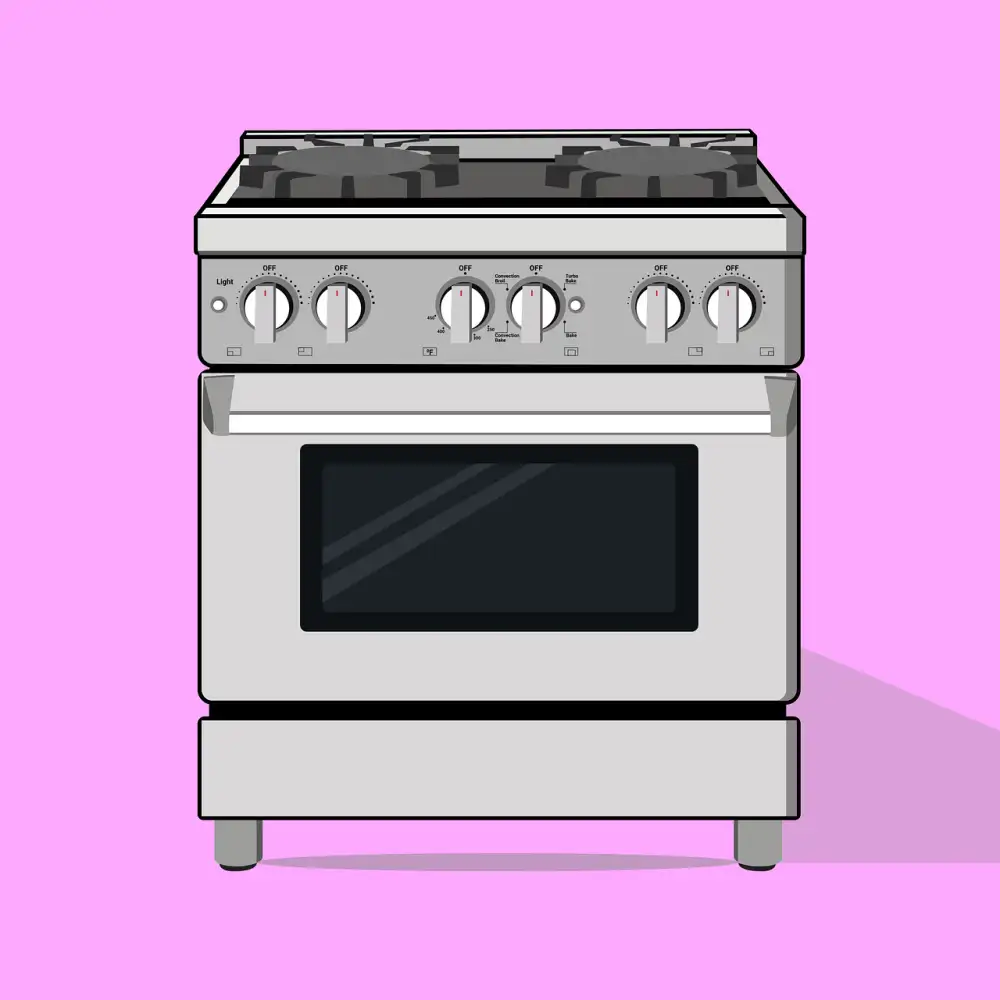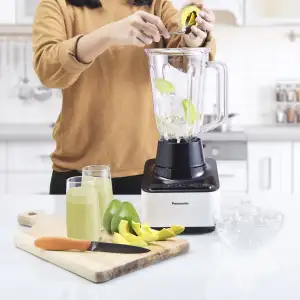Mastering the Art of Cooking: A Step-by-Step Guide on How to Use a Convection Oven at Home

- Understanding the Basics of Convection Cooking
- Preparing Your Convection Oven for Use
- Adjusting Cooking Times and Temperatures
- Maximizing Efficiency and Energy Savings
- Exploring Different Cooking Techniques with a Convection Oven
- Cleaning and Maintaining Your Convection Oven
- Troubleshooting Common Issues with Convection Ovens
Convection ovens have revolutionized the way we cook, offering faster and more efficient cooking results. Unlike traditional ovens, which rely on radiant heat, convection ovens use a fan to circulate hot air evenly throughout the oven cavity. This constant circulation of hot air ensures that food cooks more quickly and evenly, resulting in perfectly cooked dishes every time.
The use of a convection oven can greatly enhance your culinary skills, allowing you to achieve professional-level results in the comfort of your own home. Whether you're baking delicate pastries or roasting a succulent chicken, a convection oven can be your secret weapon in the kitchen.
In this comprehensive guide, we will take you through everything you need to know about using a convection oven at home. From understanding the basics of convection cooking to exploring different techniques and troubleshooting common issues, we'll equip you with all the knowledge and skills necessary to master the art of cooking with a convection oven. So let's get started on this flavorful food adventure!
Understanding the Basics of Convection Cooking
Convection cooking is a method that utilizes the circulation of hot air to cook food more efficiently and evenly. Unlike traditional ovens, which rely on radiant heat, convection ovens have a fan that helps distribute the heat throughout the oven cavity.
The circulating hot air in a convection oven speeds up the cooking process, resulting in faster cooking times. This is especially beneficial when it comes to roasting meats or baking pastries, as it helps to achieve a crispy exterior while maintaining moisture inside.
One key aspect of convection cooking is understanding how to adjust recipes for this type of oven. Since convection ovens cook food faster than traditional ovens, it's important to reduce both the temperature and cooking time specified in recipes. A general rule of thumb is to lower the temperature by about 25 degrees Fahrenheit and decrease the cooking time by around 25%.
Additionally, it's essential to use cookware that allows for proper airflow in a convection oven. Opt for shallow pans or baking sheets with low sides to allow hot air to circulate freely around the food.
By understanding these basics of convection cooking, you can make the most out of your convection oven and elevate your culinary creations to new heights.
Preparing Your Convection Oven for Use
Before you start cooking with your convection oven, it's important to properly prepare it for use. Here are a few steps to follow:
1. Read the manual: Familiarize yourself with the manufacturer's instructions and guidelines for using your specific convection oven model. This will ensure that you understand its features and functions.
2. Clean the interior: Remove any racks or accessories from the oven and wipe down the interior with a damp cloth. Make sure to remove any grease or food residue that may have accumulated.
3. Check the seals: Inspect the door seals to ensure they are intact and in good condition. Damaged seals can affect the oven's performance, so replace them if necessary.
4. Test the temperature accuracy: Use an oven thermometer to check if your convection oven is heating accurately. Place the thermometer inside and set the oven to a specific temperature. After preheating, check if the thermometer matches the set temperature.
5. Calibrate if needed: If your convection oven's temperature is not accurate, you may need to calibrate it according to the manufacturer's instructions. This will help ensure precise cooking results.
By following these steps, you'll be well on your way to using your convection oven effectively and enjoying delicious meals with ease!
Adjusting Cooking Times and Temperatures
One of the key benefits of using a convection oven is its ability to cook food faster and more evenly. However, it's important to note that cooking times and temperatures may need to be adjusted when using a convection oven compared to a conventional oven.
When using a convection oven, you can typically reduce the cooking time by about 25% compared to a conventional oven. This is because the hot air circulation in a convection oven helps food cook more quickly. However, it's essential to keep an eye on your food as it cooks, as it may finish faster than expected.
In terms of temperature adjustments, you generally want to lower the temperature by about 25 degrees Fahrenheit (or 15 degrees Celsius) when using a convection oven. This is because the circulating hot air in the convection oven can cause food to cook faster at higher temperatures.
It's worth noting that every recipe is different, so these adjustments are just general guidelines. It's always best to refer to your specific recipe or consult your convection oven's manual for recommended cooking times and temperatures.
By adjusting cooking times and temperatures accordingly, you'll be able to make the most out of your convection oven and achieve perfectly cooked meals every time.
Maximizing Efficiency and Energy Savings
To maximize efficiency and energy savings when using a convection oven, there are a few key tips to keep in mind. Firstly, always preheat your oven before cooking. This ensures that the oven reaches the desired temperature quickly and reduces overall cooking time. Additionally, try to cook multiple dishes at once to make the most of the oven's capacity and save energy. However, be sure not to overcrowd the oven as this can hinder proper air circulation. Lastly, use the convection feature for longer cooking times or larger quantities of food as it can significantly reduce cooking time and energy consumption. By following these tips, you can enjoy delicious meals while minimizing energy usage and saving on utility bills.
Exploring Different Cooking Techniques with a Convection Oven
A convection oven offers a wide range of cooking techniques that can elevate your culinary skills. One technique is roasting, which involves cooking meat or vegetables at high temperatures to achieve a crispy exterior and juicy interior. The convection fan helps distribute heat evenly, resulting in perfectly cooked dishes.
Another technique is baking, where the convection oven's even heat distribution ensures consistent browning and rising of baked goods. It's ideal for making cookies, cakes, and bread with a golden crust and moist center.
Grilling is also possible with a convection oven by using the broil setting. This technique allows you to achieve those coveted grill marks on meats and vegetables without needing an outdoor grill. The intense heat from the top element combined with the convection fan creates deliciously charred flavors.
You can also use your convection oven for dehydrating fruits, vegetables, or making homemade beef jerky. The low temperature setting combined with the gentle airflow helps remove moisture while preserving flavors.
Lastly, don't forget about air frying! Many convection ovens come equipped with an air fryer function. This allows you to enjoy crispy fried foods using significantly less oil than traditional deep-frying methods. From French fries to chicken wings, you can indulge in guilt-free favorites.
With a convection oven, you have endless possibilities to explore different cooking techniques and unleash your creativity in the kitchen. Experiment with recipes and let your taste buds be amazed by the flavorful results!
Cleaning and Maintaining Your Convection Oven
Cleaning and maintaining your convection oven is essential to ensure optimal performance and longevity. Here are some tips to keep your oven in top shape:
1. Regular Cleaning: After each use, wipe down the interior and exterior of the oven with a damp cloth or sponge. Use mild dish soap if necessary, but avoid abrasive cleaners that can damage the surfaces.
2. Remove Grease Buildup: Over time, grease can accumulate on the oven walls and racks. To remove stubborn grease, mix baking soda with water to create a paste. Apply the paste to the affected areas, let it sit for a few minutes, then scrub gently with a non-abrasive brush or sponge.
3. Clean the Racks: Remove the racks from the oven and soak them in warm soapy water for about 30 minutes. Scrub off any residue using a soft brush or sponge, then rinse thoroughly and dry before placing them back in the oven.
4. Clean the Oven Door: The glass door of your convection oven can become dirty from splatters and spills. Use a glass cleaner or a mixture of vinegar and water to clean both sides of the door, wiping away any streaks with a microfiber cloth.
5. Check and Replace Filters: Some convection ovens have filters that need regular cleaning or replacement. Consult your oven's manual for instructions on how to clean or replace these filters to maintain proper airflow.
6. Schedule Professional Maintenance: It's recommended to have your convection oven professionally serviced at least once a year to ensure all components are working correctly and efficiently.
By following these cleaning and maintenance practices, you'll not only keep your convection oven looking its best but also ensure it continues to deliver delicious meals for years to come.
Troubleshooting Common Issues with Convection Ovens
While convection ovens are a great addition to any kitchen, they can sometimes present challenges. Here are some common issues you may encounter and how to troubleshoot them:
1. Uneven Cooking: If your food is cooking unevenly, it could be due to improper placement of the racks. Make sure to use the recommended rack position for the type of food you're cooking.
2. Excessive Browning: If your food is browning too quickly or becoming overly crispy, try reducing the cooking temperature slightly or covering it with foil to prevent further browning.
3. Inaccurate Temperature: If you suspect that your oven's temperature is not accurate, use an oven thermometer to verify. If there is a significant difference, you may need to recalibrate your oven or have it serviced.
4. Excessive Drying: Convection ovens can sometimes cause food to dry out faster than traditional ovens. To prevent this, consider using a lower temperature or shorter cooking time and adding moisture by placing a water-filled dish in the oven while cooking.
5. Fan Noise: It's normal for convection ovens to produce some noise due to the fan circulating hot air. However, if you notice an unusually loud or rattling noise, check for any loose parts or debris that may be obstructing the fan.
By understanding these common issues and their solutions, you'll be able to troubleshoot any problems that arise while using your convection oven and ensure optimal cooking results every time.
In conclusion, mastering the art of cooking with a convection oven opens up a world of possibilities in your kitchen. By harnessing the power of hot air circulation, you can achieve faster and more even cooking results. Not only does this save you time, but it also enhances the flavors and textures of your dishes. With a convection oven, you can bake crispy cookies, roast succulent meats, and even dehydrate fruits and vegetables. The versatility and efficiency of a convection oven make it an indispensable tool for any home cook. So why not embark on this flavorful food adventure and elevate your culinary skills with the help of a convection oven? Happy cooking!
Published: 31. 12. 2023
Category: Home



